
Roopa Chauhan
January 20, 2025
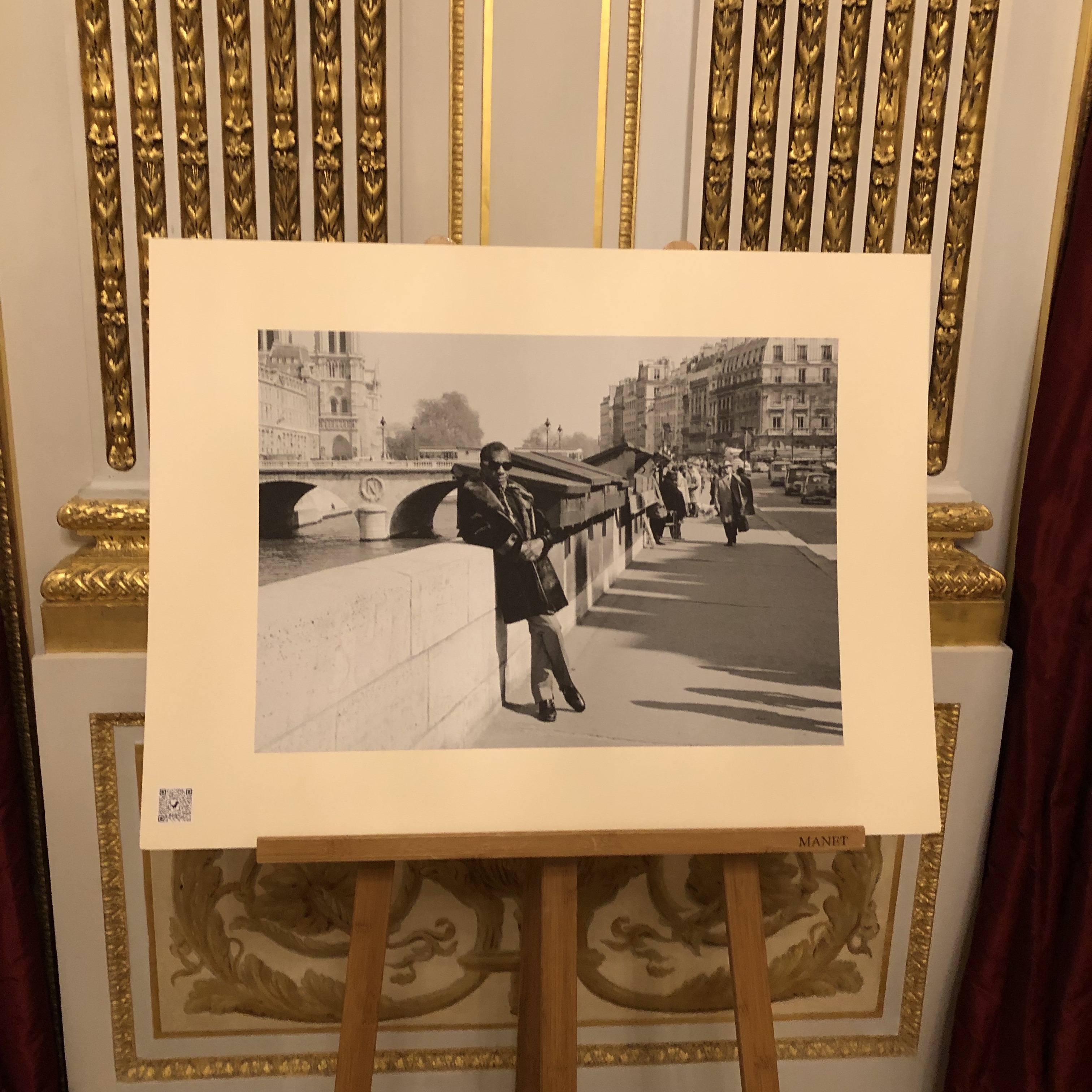
Distance is relative. Proximity does not necessarily lead to connection or understanding. Sometimes, the farther away you are from the people and places that raised you, the better you can see them.
In 1948, James Baldwin decided to put an ocean between himself and the United States. If there were a catalyzing event that propelled him to seek refuge in France, it would have been his best friend’s suicide in 1946.1 The tragedy inspired his 1962 novel, Another Country, and proved to Baldwin that his own survival was also at stake.2
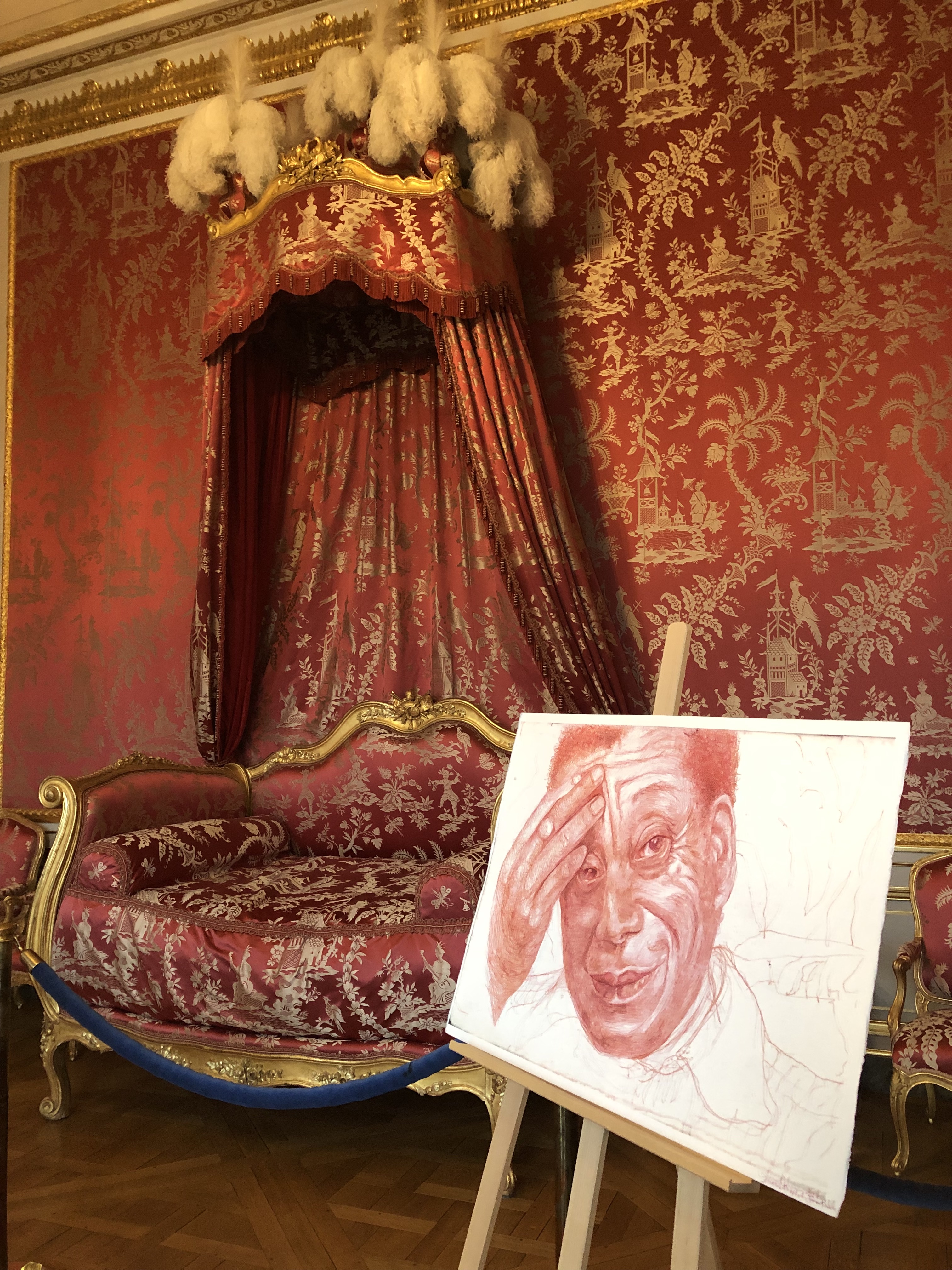
Baldwin had often described his move from Harlem to Paris as an escape, not only from limited possibilities, but from certain death. Given the “fury of the color problem”3 in the United States, this was not an exaggeration. The fact of Baldwin’s homosexuality could only amplify the animosity directed towards him as a black-skinned man.
While in France, Baldwin wrote extensively about the plight of Black people in the country of his birth. Thousands of miles from home, Paris gave him the perspective he needed to weave his recollections of growing up in Harlem into literary gold. Legend has it that parts of his first semi-autobiographical novel Go Tell It on the Mountain were written on the first floor of the Café de Flore, located in the now chic Parisian neighborhood of Saint-Germain-des-Prés.4
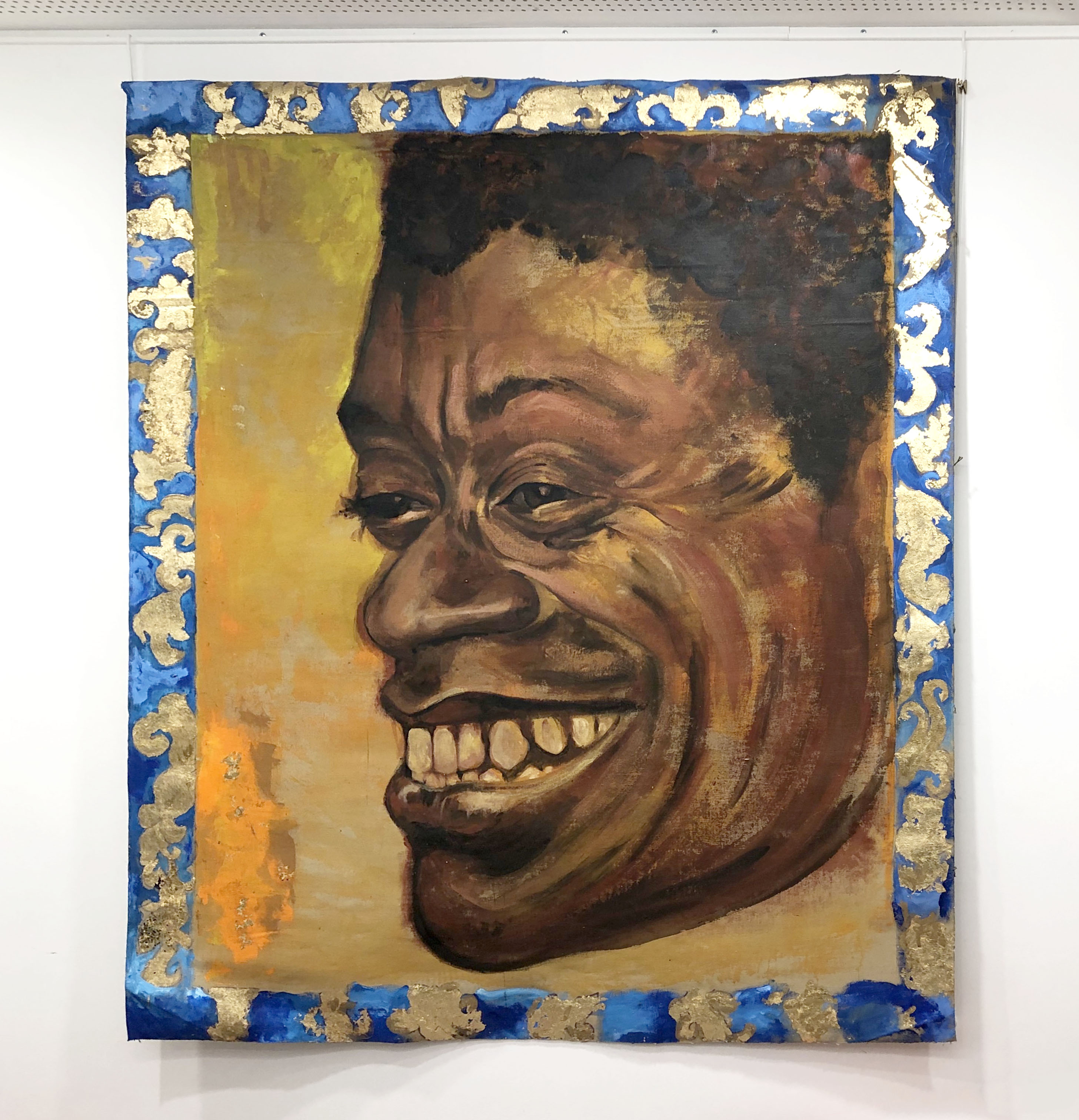
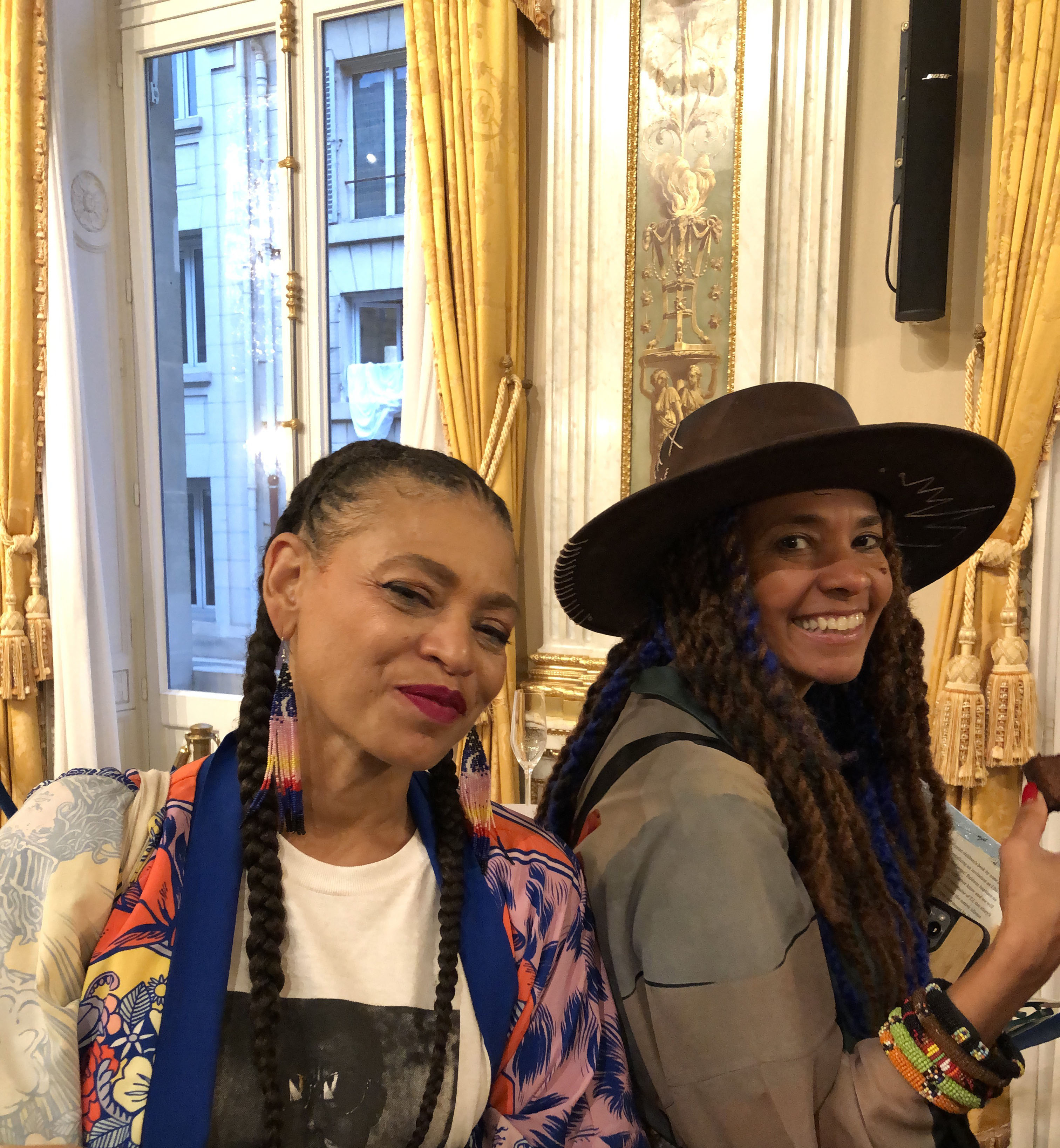
Of the French, Baldwin said they left him alone; they may not have embraced him fully, but they let him get on with it.5 On the American experience in France, Baldwin wrote:
What Europe still gives an American – or gave us – is the sanction, if one can accept it, to become oneself. No artist can survive without this acceptance. But rare indeed is the American artist who achieved this without first becoming a wanderer6…
In France, Baldwin became that wandering artist and celebrated writer – hopping from hotel to hotel, café to café, traveling from Paris to Saint Paul de Vence, to Switzerland, to Turkey, to Senegal, to Sierra Leone, and to Ghana.7 Abroad, he was free in a way he could not be in the mid-20th century United States, where racism, segregation, and Jim Crow Laws8 were entrenched. France was by no means a utopia for people of color either, but as an American citizen, Baldwin’s skin color was less politically charged.9
Though queer and Black, Baldwin enjoyed a measure of freedom in France.10 His output was prolific. He wrote some of the most searing, lyrical, and prophetic essays on American life, including The Fire Next Time and Notes on a Native Son. By the time Baldwin died from stomach cancer11 in 1987, he had written hundreds of essays, six novels, and two plays12 leaving behind a legacy as one of the 20th century’s greatest American writers.
In 2024, Baldwin would have been one-hundred years old. His milestone birthday was celebrated all over the United States, and the world. In Paris, from September 9th to 13th, 2024, the James Baldwin Centennial Festival recognized his continued relevance by honoring his life and writing. The festival was organized by Tara Phillips, the eloquent and dedicated Executive Director of the Paris-based non-profit, La Maison Baldwin, which was established in 2016 to preserve James Baldwin’s memory and contributions to literature and political activism.
The Centennial Festival included a program of inspiring panel discussions with eminent speakers such as Jake Lamar, Trevor Baldwin13, Florence Ladd14, Ed Pavlić, Lynnée Denise, Wendy Johnson, and Rokhaya Diallo. Youcef Brakni15 and Assa Traoré16 led workshops on activism. Deesha Philyaw, Brian Broome, and Kwame Dawes gave essay writing workshops. A screening of Karen Thorsen’s documentary, The Price of the Ticket17 took place alongside an Amen Corner-themed18 open mic organized by Paris Lit-Up.
The many highlights included Sabrina Nelson’s exhibition, Frontline Prophet: James Baldwin, and a live performance by the professional violinist and academic, Dr. Melanie R. Hill.
Frontline Prophet: James Baldwin by Sabrina Nelson was held at the American University of Paris (AUP) from September 6th to October 5th, 2024. No less than thirty drawings and paintings were flown across the Atlantic, from Detroit to Paris for the exhibition, which was derived from a more expansive one of the same name at the Charles H. Wright museum in Detroit. The Wright show opened on the artist’s 100th birthday, August 2, 2024, and is on view through February 28th, 2025.
An exhibition shared between two continents is a fitting homage to James Baldwin, who spent most of his adult life traveling between Europe and the United States. Legendary Detroiters brought the city’s energy and spirit to the Paris-based festival, speaking to the enduring importance of Baldwin’s message of tolerance and equality in the midwestern industrial and cultural hub of Detroit.
This spirit of inclusion was palpable at the opening of Nelson’s show in Paris, which, like the Detroit show, was curated by Ashara Ekundayo and Omo Misha. An international crowd gathered at AUP to listen to an exciting panel discussion featuring Sabrina Nelson. Panelists included Detroit’s Poet Laureate, Jessica Care Moore, author and distinguished professor of African American Studies at Wayne State University, Dr. Melba Boyd, and curator, Ashara Ekundayo. The poet, musician, and performance artist, Brad Walrond performed “Amphibia”19, a poem from his most recent collection, Every Where Alien20. Though not from Detroit, Walrond’s work embodies the city’s community-oriented spirit and Baldwin’s lyricism. An enthralled audience listened to Moore as she recited “We Want Our Bodies Back"21 from her book of the same name. This deeply personal poetry collection explores the power of language to reclaim bodies and stories that have been lost, stolen or violated.
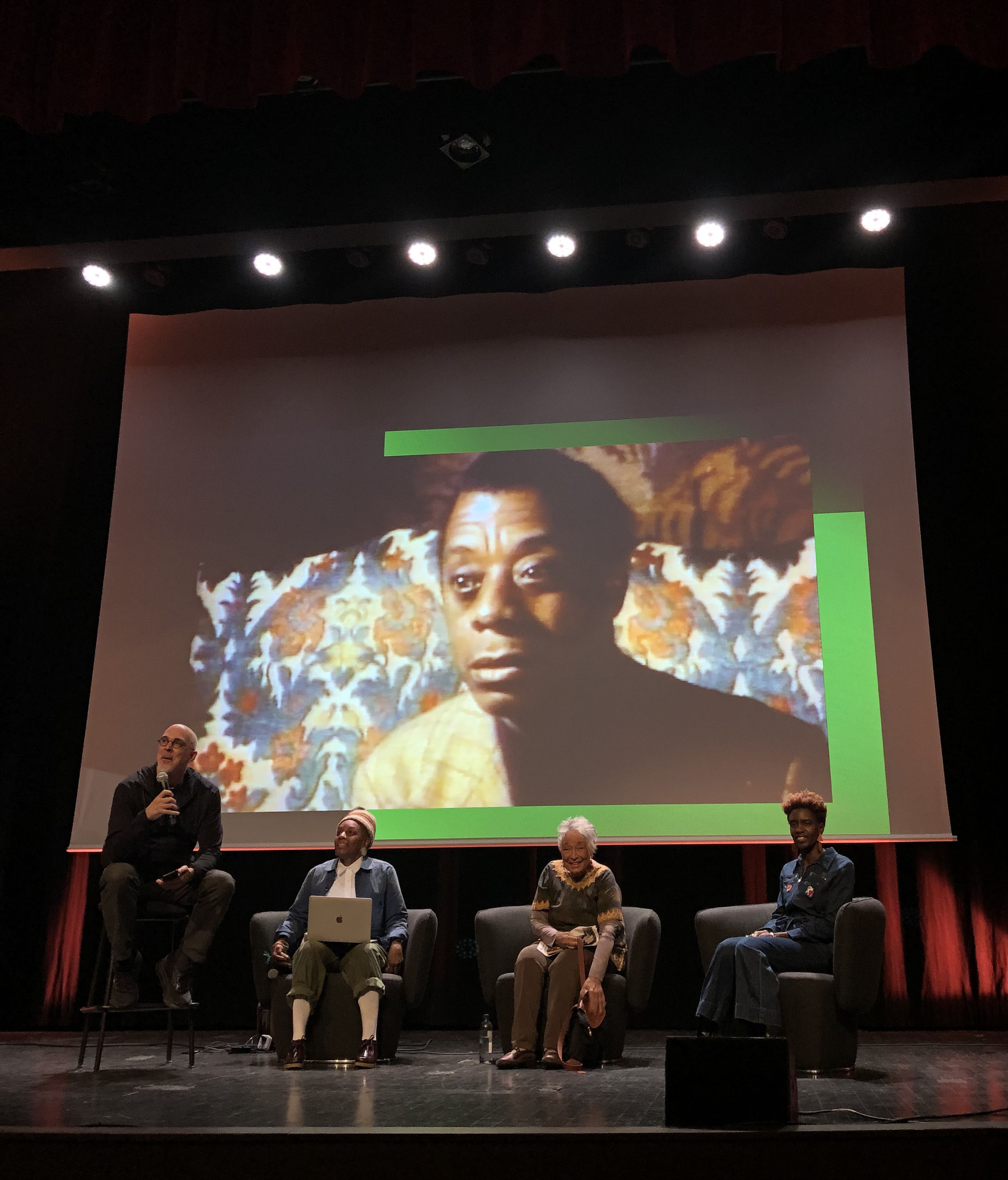
Together, these artists discussed not only their craft, but what it means to have a creative practice and how place informs their art. Nelson, Boyd, Moore, and Ekundayo, all daughters of Detroit, spoke about how the city has shaped their ideals and fueled their activism. They reminded us that through his involvement in the Civil Rights movement, Baldwin knew Clarence B. Jones22 and Martin Luther King Jr., and could have been in Detroit around the time King was preparing his “I have a Dream” speech.23 They also told us that a self-portrait by Beauford Delaney, his great friend and painter, hangs in the Detroit Institute of the Arts.24
They showed us that Detroit is a resilient place where people, businesses, and creativity thrive.25 “You know in Detroit, we build things, we make things,” Boyd said during her speech. And the city does not just make cars; its music, literature, and art have been attracting international attention for decades.26 The spirit fueling the city’s cultural exports is rebellious, yet deeply humble.
Boyd recalled her experience as a Master’s student at Western Michigan University in 1972 when she fought with the Chair of the English Department to stay in the program:
I wanted to do Black American literature. I did my Master’s essay on Chester Hines, which had been published, so there was no way he could throw it out the window or deny me my degree. And I was, mind you, the only Black person in the graduate program, and 21 years old. I’m Black. I’m a woman, and I’m the youngest thing there, and he is picking on me. I just said: fuck it!27
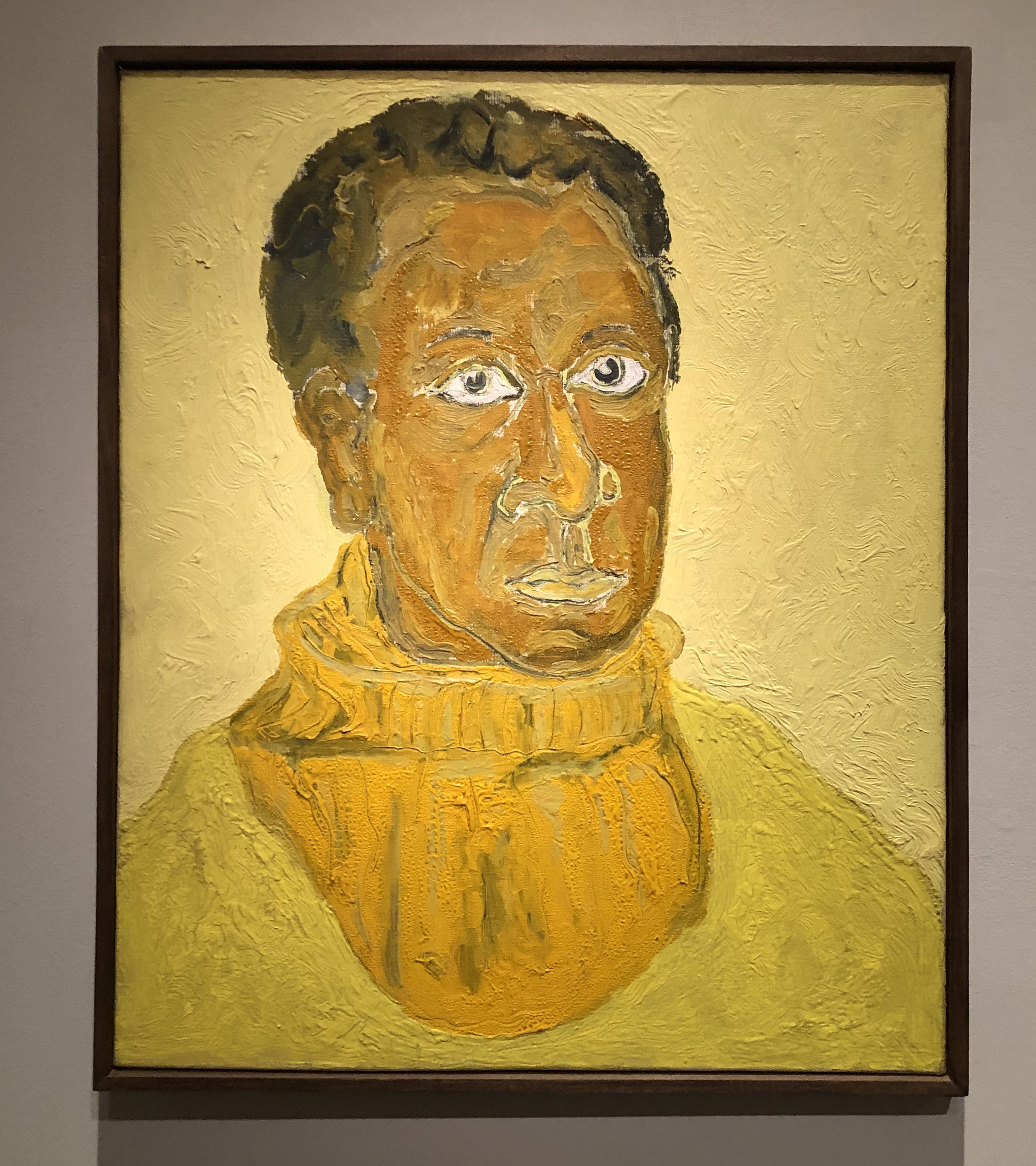
The audience laughed at her irreverence as time and space folded when Moore said, “Hey Paris, welcome to Detroit”. “When you’re from the ‘D’”, Boyd explained, “you step up, you speak up, because we have been through it all”. After the Rebellion,28 the ups and downs of the automobile industry,29 and bankruptcy,30 the city still stands tall – as vibrant as ever. This stanza from Walrond’s poem, “Amphibia”, applies:
It has already survived the demise, the burden,
the betrayal,
the selling away, of all one’s beloved.31
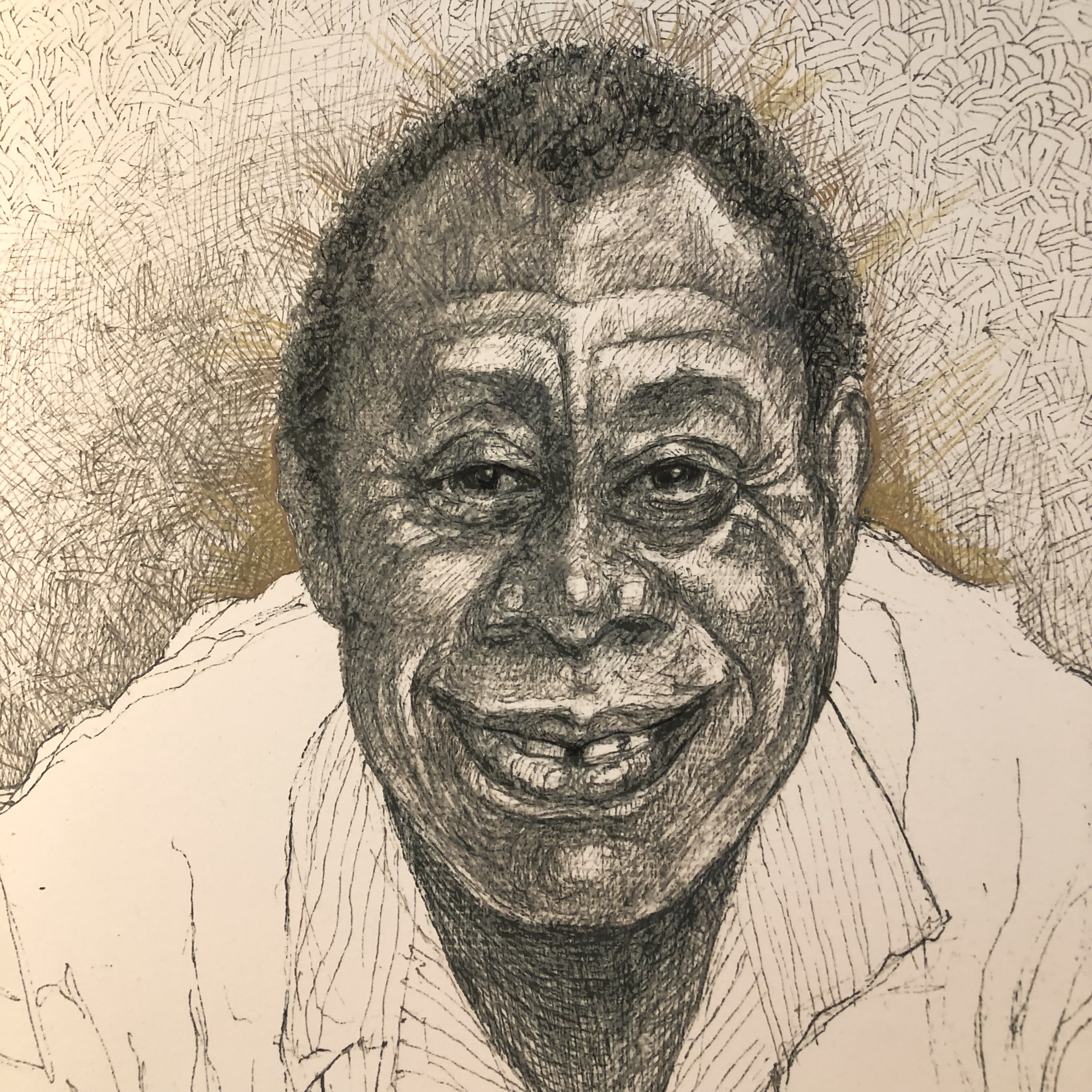
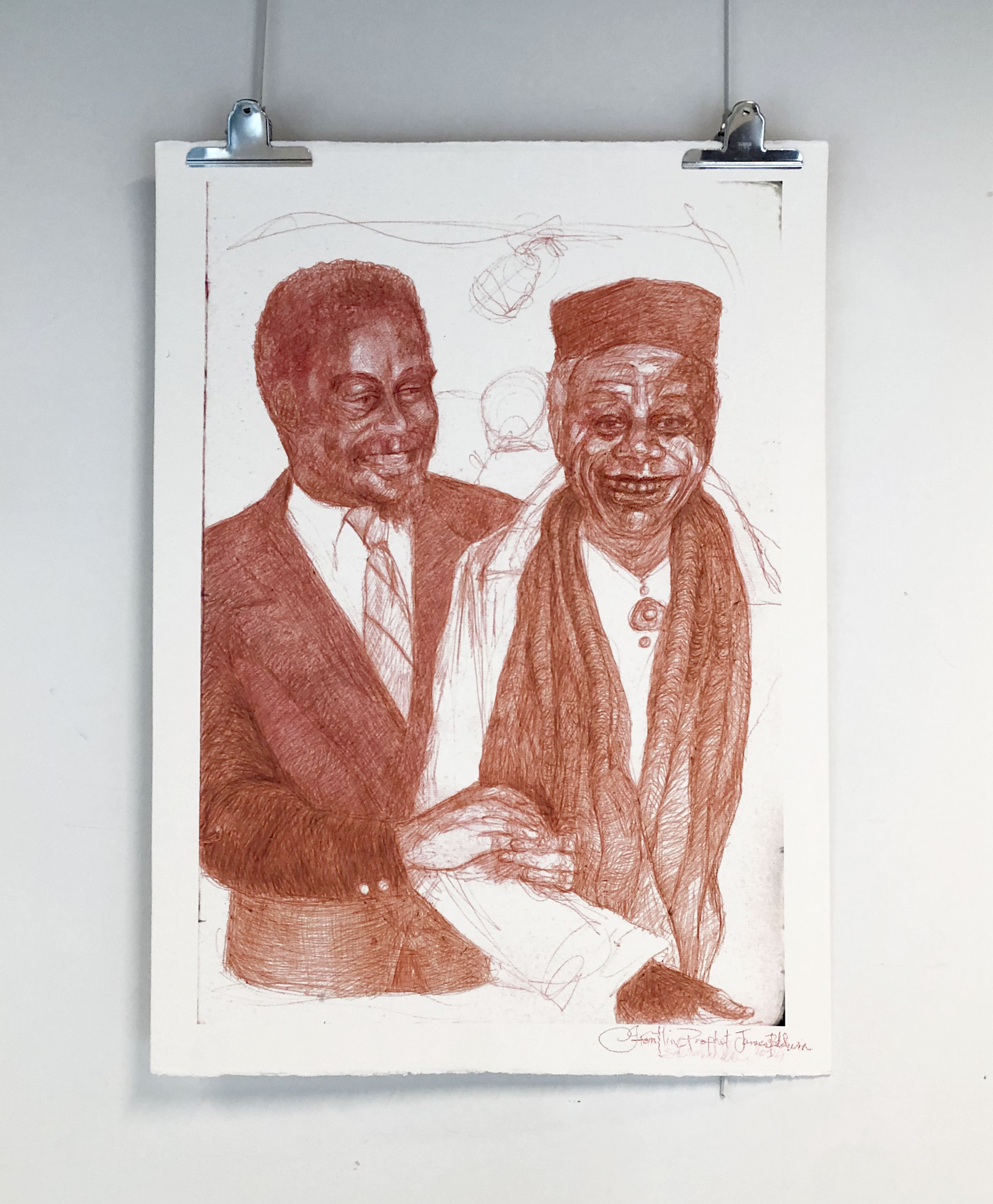
Once the artist talk concluded, guests were invited to make their way to the ground floor gallery where Black Terminus AR gave a presentation on the augmented reality component of Nelson’s show, offering visitors an opportunity to uncover hidden layers of sound and form in the pieces.
The gallery at the American University of Paris is a shared space that runs along the walls of a large reception area before narrowing into a long hallway lining a library with glass walls. At the end of the hallway is another reception area with colorful chairs. This is where Sabrina Nelson’s portraits of James Baldwin were displayed. They were not locked behind frames or glass, but instead, hung freely from the ceiling.
The informal staging drew out their subject’s vulnerability, creating an intimacy with the viewer. Someone daring or irreverent could have reached out to touch Baldwin’s likeness. One was struck by how many portraits there were, each one representing the many facets of Baldwin’s life and personality: his famous gap-toothed smile, his elegance, the depth of joy, sorrow, and intelligence in his eyes, the grace of his hands holding a pen. Some were in black and white, others in color. Some captured his regal stillness. Others his restless spirit. Nelson manages to say something new in every single one.
In an interview for the 1984 spring issue of The Paris Review, Baldwin told Jordan Elgrably,32 “I’m still learning how to write. I don’t know what technique is. All I know is that you have to make the reader see it”. I asked Nelson what she saw when drawing portraits of Baldwin. She paused thoughtfully before saying that she didn’t see so much as hear his voice and feel his presence because when I hear and move my hand, I can soak in what’s being said. I can pay attention when I am moving my hands. It’s almost like taking notes except my words are my images. I’m drawing his face when I hear him – the way he breathes and talks with his hands and tilts his head,33
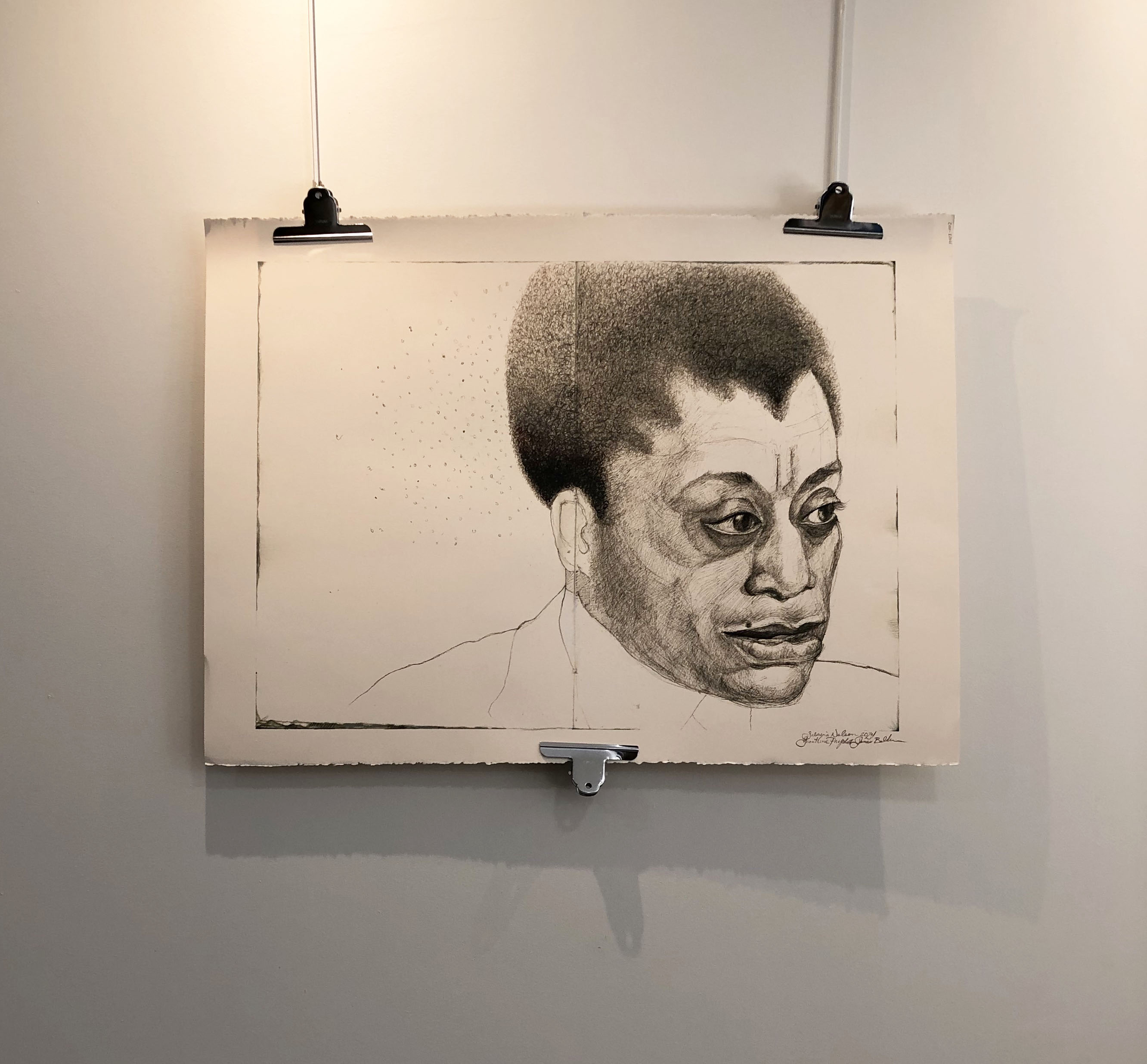
Nelson has studied Baldwin’s words and likeness extensively, but she draws from memory. The process is spiritual for her – like a meditation. While she draws the lines in his face, the laughter in his eyes, she conjures up his presence, “reopens a portal, so he can re-enter."34 She is in constant dialogue with her subject, drawing him back to life with every stroke.
Students milled about, preoccupied with their lives. Did they know who this man was and what he represents? As they walked by the images, some stopped to look. Those who did not recognize the man, whose eloquence resonates still today, may have Googled him and learned that he was a celebrated writer in his time, that he called Martin Luther King Jr., Malcolm X, and Medgar Evers friends,35 that he fought for the equality and the freedom we enjoy today, freedom that should not be taken for granted, and equality for which we continue to fight. Hopefully, some may have gone so far as to read his work and experience for themselves how his 20th century words and ideas ring true in the 21st century – especially today.
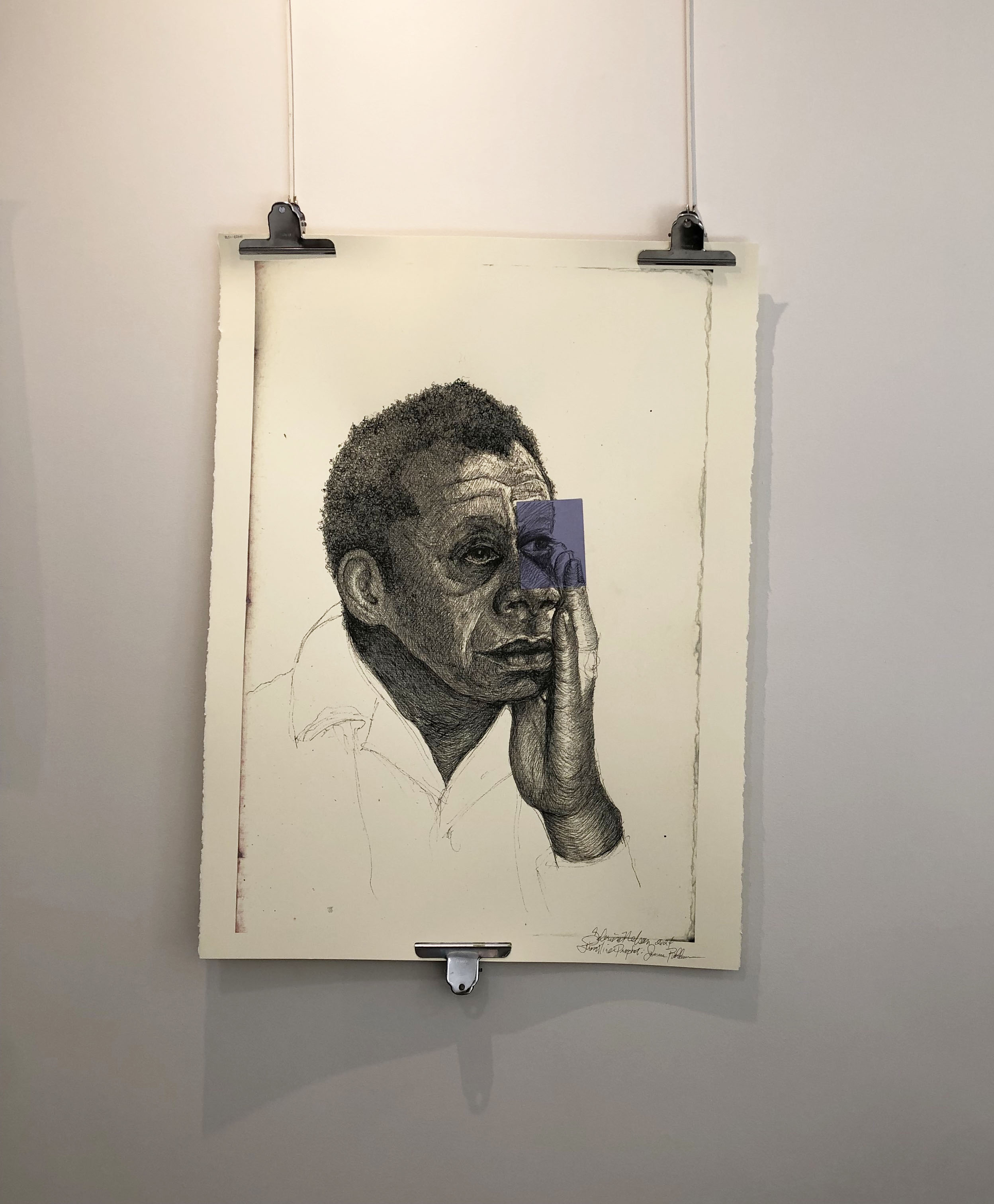
Artists thrive in multiplicity, nourished by difference and culture clashes – they find resonance in dissonance. These tensions enrich both Baldwin and Nelson’s work as they move through time and space, reconciling the past with the present, and look to the future with the audacity to hope regardless of the struggle ahead. The cultural bridges they build unite, sustain, and nourish us on both sides of the Atlantic. Within this in-between, trans-Atlantic space, the truth can be pinned down, tethered, and tamed. Baldwin traveled across international waters to help us see better. Nelson’s drawings crossed the ocean to help us see him better, reminding us that there is resistance in remembering, that art heals, and that the words of prophets endure.
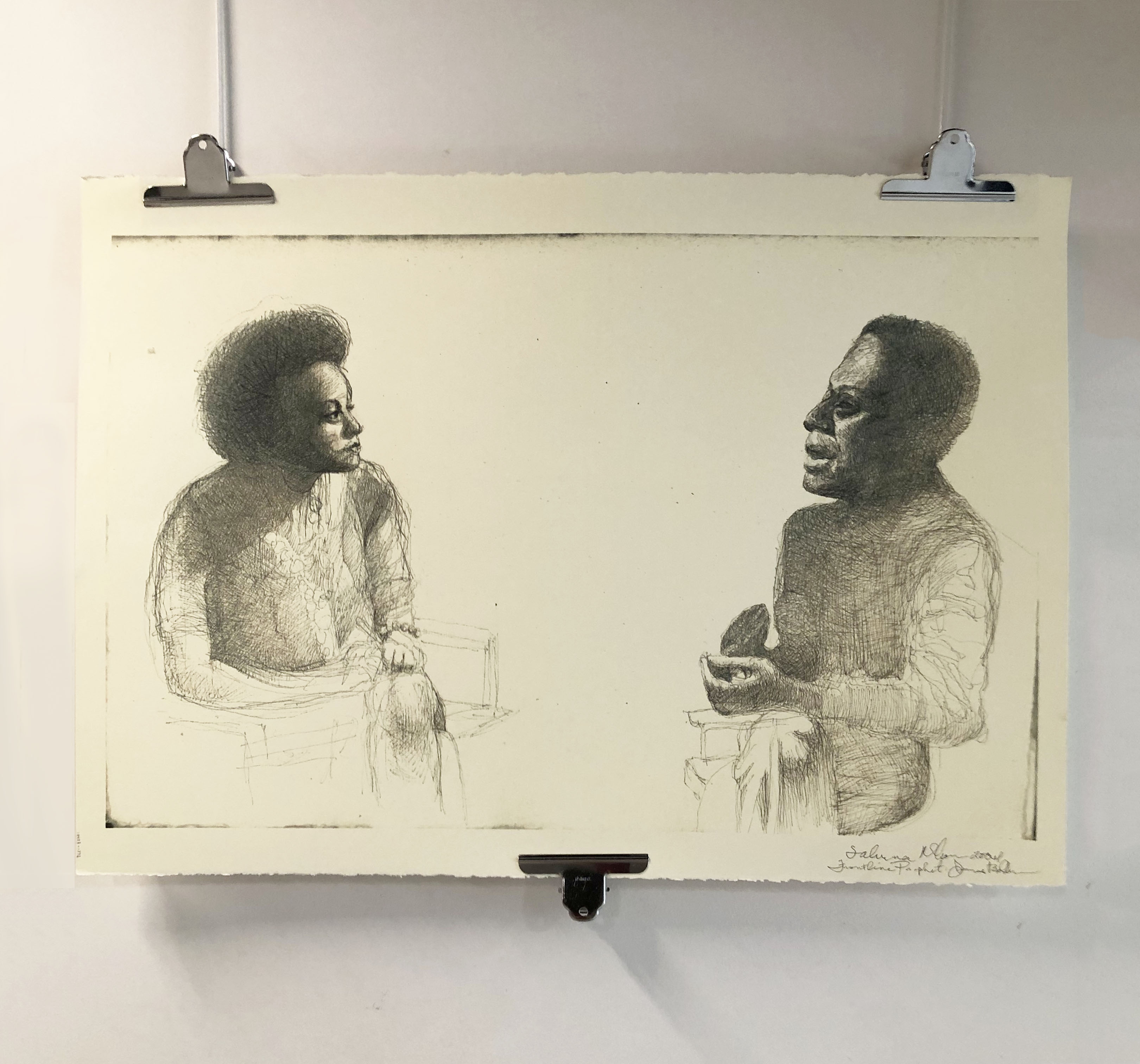
More information about the events, artists, curators, and authors mentioned in this article can be found here:
La Maison Baldwin website
The Baldwin Centennial Program website
Frontline Prophet: James Baldwin AUP website
Frontline Prophet: James Baldwin at the Charles H. Wright Museum website
Sabrina Nelson website
Jessica Care Moore website
Ashara Ekundayo website
Omo Misha website
Tara Philips, Executive Director of La Maison Baldwin website
Jake Lamar website
Ed Pavlić website
Lynnée Denise website
Wendy Johnson website
Rokhaya Diallo website
Deesha Philyaw website
Brian Broome website
Kwame Dawes website
Dr. Melanie R. Hill website
Brad Walron: website
Black Terminus AR website
Paris Lit-Up website
*All images courtesy of Roopa Chauhan
1. James Baldwin, “The New Lost Generation,” in James Baldwin: Collected Essays, ed. Toni Morrison (The Library of America, 1998), 659.
2. Pauline Guedj, “Perspective through Exile: James Baldwin in France,” France-Amérique. June 4, 2020, Link. .
3. James Baldwin, “The Discovery of What it Means to be an American,” in James Baldwin: Collected Essays, ed. Toni Morrison, (The Library of America, 1998), 137.
4. “Other Entrée to Black Paris Walking Tours,” Entrée to Black Paris, https://www.entreetoblackparis.com/entree-to-black-paris-other-walking-tours, accessed November 11, 2024. Samuel Rutter, “Exploring James Baldwin’s Old Haunts in New York and Paris,” The New York Times, December 17, 2020, Link. .
5. Ellery Washington, “James Baldwin’s Paris,” The New York Times, January 17, 2014, sec. Travel, Link. .
6. James Baldwin, “The New Lost Generation,” in James Baldwin: Collected Essays, ed. Toni Morrison (The Library of America, 1998), 668.
7. Elizabeth Esris, “James Baldwin: Scrutinizing America from Paris,” France Revisited - Life in Paris, Travel in France. October 12, 2020, Link. .
8. “Jim Crow Laws”, Freedom Riders Article, American Experience on PBS: Link. , accessed November 24, 2024.
9. Baldwin’s time in France (from 1948 until his death) overlapped with the Algerian War of Independence (1954-1962). Having observed the mistreatment and marginalization of the Algerians living in France during this period, he concluded that they were the “negroes of France”. Meeting the Man: James Baldwin in Paris. Directed by Terence Dixon, Edited by Richard Key, Produced by Soulus Enterprises, London, 1970, 00:02:30.
10. James Baldwin, “National Press Club Speech,” recorded December 10, 1986, Link. .
11. James Baldwin, Biography, The Museum of African American History and Culture, Washington DC, Link. , accessed November 11, 2024.
12. James Baldwin Centennial Committee (JBCC), https://www.jamesbaldwin.info, accessed November 11, 2024.
13. James Baldwin’s nephew, a talented writer, and keeper of his Uncle Jimmy’s legacy.
14. Author of the critically acclaimed novel, Sarah’s Psalm, and an academic who taught at Harvard’s University’s Graduate School of Education, Harvard’s University’s Graduate School of Design, and the Massachusetts Institute of Technology where she also served as Associate Dean. Florence Ladd, MIT Black History, Link. .
15. An anti-racism activist who works with Assa Traore on the Truth for Adama Committee. Olly Haynes, “‘We Want to Breathe’: Anti-Racist, Environmental and Gilets Jaunes Campaigners Are Joining Forces in France,” Novara Media, August 21, 2020, Link. .
16. The French-Malian was Time Magazine’s Person of the Year in 2020. She is an anti-racist, anti-police brutality activist whose brother was killed in 2016 while he was in police custody for not having his identity papers on him when they stopped him. Vivienne Walt, “How Assa Traoré Became the Face of France’s Movement for Racial Justice,” Time, December 11, 2020, Link. .
17. Karen Thorsen directed the documentary, The Price of the Ticket, an autobiographical portrait of James Baldwin, released in 1989, Link. .
18. James Baldwin, Amen Corner, (Samuel French, 2010).
19. Brad Walrond, “Amphibia,” Every Where Alien, (Moore Black Press, 2024), 172-174.
20. Brad Walrond, Every Where Alien, (Moore Black Press, 2024).
21. Jessica Care Moore, “We Want Our Bodies Back,” We Want Our Bodies Back, (Amistad Harper Collins, 2020, 19-29.
22. Martin Luther King’s speech writer.
23. Karel Vega, “That One Time in Michigan: When We Walked With MLK,” The Gander, January 10, 2024, Link. .
24. Beauford Delaney, Self-portrait, 1962, oil on canvas, 23 × 19 in (58.4 × 48.3 cm), Detroit Institute of Arts, Detroit, accession no. 1992.214, Link. .
25. George A. Fulton and Saul H. Hymans, The Detroit Economic Outlook Update for 2023–2029 / Executive Summary: September 2024, (Research Seminar in Quantitative Economics, University of Michigan, Ann Arbor, 2024), Link. .
26. Arts and Culture, Visit Detroit, https://visitdetroit.com/things-to-do/arts-culture/, accessed November 12, 2024.
27. Dr. Melba Boyd, panel discussion, (opening of James Baldwin: Frontline Prophet at the American University of Paris), September 10, 2024, transcription available upon request.
28. Uprising of 1967, Encyclopedia of Detroit, Detroit Historical Society, Link. accessed November 12, 2024.
29. Mark Williamson, “Detroit: Decline and fall of the Motor City,” Engineering and Technology, December 15, 2014, Link, accessed November 12, 2024
30. Ken Coleman, “On this day in 2013: The city of Detroit files for bankruptcy,” Michigan Advance, July 18, 2023, Link., accessed November 12, 2024
31. Brad Walrond, “Amphibia,” Every Where Alien, (Moore Black Press, 2024), 173.
32. James Baldwin, interviewed by James Elgraby, “James Baldwin, The Art of Fiction No. 78,” The Paris Review, Issue 91, Spring 1984, Link., accessed November 12, 2024
33. Sabrina Nelson, interview with the artist at the United States Embassy in Paris, France, September 9, 2024. Transcript available upon request.
34. Sabrina Nelson, interviewed by Stephen Henderson, host of American Black Journal, PBS Detroit, August 7, 2024, Link.
35. Andrew Lapin, “James Baldwin, In His Own Searing, Revelatory Words: ‘I Am Not Your Negro,’” National Public Radio, February 2, 2017, Link..